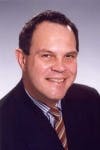Collaboration of dentistry and medicine key in the treatment of snoring and sleep disorders
June 15, 2011
By Larry Aronson, DDS, and Matthew D. Mingrone, MDSnoring and poor sleep are pervasive conditions in America. The National Sleep Foundation estimates that more than 90 million Americans snore, and long-term health implications of snoring and poor sleep ensue. Research has linked the long-term effects of poor sleep to noninsulin-dependent diabetes, hypertension, coronary artery disease, and stroke. Historically, the treatments available for snoring have been either ineffective home remedies (sewing a tennis ball into the back of a nightshirt) or treatments that are difficult for patients to comply with (CPAP and surgery).Recently, advances in medical technology have provided revolutionary and life-changing treatments that are simple, safe, effective, and convenient. Clinical evidence has also shown that an integrated team approach of medical professionals (physicians, dentists, nurses) delivering coordinated care in one facility improves outcomes. New paradigms are being developed, which utilize minimally invasive, comprehensive, multilevel treatment. A coordinated team can deliver these treatments using the skill, training, and airway expertise of both an otolaryngologist (ENT physician) and a dentist, both of whom focus on treating sleep disordered breathing. The indirect costs of sleep disorders are estimated to be more than $41 billion a year from lost work productivity, up to $27 billion from automobile accidents, $7 billion in work-related injuries, and up to $4 billion a year in home accidents. Sleep has only recently received the attention from the medical community, researchers, and lay public that it deserves. The connection between sleep and optimal health is often not made. A survey at Stanford University in 2008 asked more than 600 people about their knowledge of the pillars of health and wellness. Only 1.7% of respondents included sleep as a key component to health (99% stated fitness, 92% included nutrition).Snoring is a noise caused by vibration of the upper airway soft tissues. There are more than 10 different anatomical areas that can contribute to snoring. It is a complex condition where more than one of these areas contributes to the condition. For example, the soft palate is often a major contributor. Blocked nasal passages or a misalignment of the tongue and the jaw often contribute as well. Enlarged tonsils and adenoids are more frequent major causes in the pediatric population. Lifestyle plays a role too. Beyond body composition, fitness level, social habits (alcohol consumption, tobacco usage), and stress can add to the severity of the condition and, ultimately, poor sleep.People who snore may or may not have sleep apnea, and the converse is also true. Many couples sleep in separate bedrooms due to the noise emanating from the snoring partner. According to the National Sleep Foundation, 23% of American couples are sleeping separately. It is important to understand the bed partner of a snorer can be equally affected by poor sleep. The same negative effects to long-term health apply. Some snoring has been recorded as loud as the sound coming from the engine of a commercial airplane. Many patients seeking treatment at Sereno have already been diagnosed with obstructive sleep apnea (OSA). Sleep apnea has serious medical implications. The average person who has untreated sleep apnea has a 250% to 300% greater chance of developing diabetes, heart disease, and stroke. In addition, this individual will usually have a lower daily quality of life due to interrupted sleep and a decrease of the oxygen that is supplying all of their organs. A sleep study helps to determine the presence and severity of the apnea, and whether it is obstructive (our focus of treatment), central (usually treated by a neurologist), or mixed (a combination of obstructive and central apnea). The traditional standard of care for treating OSA is CPAP (continuous positive airway pressure), which provides air forced through a mask or nasal cannula during sleep. While highly effective, this is a very difficult treatment for patients to comply with for obvious reasons. Some studies show that more than 50% of patients with OSA do not use their machines. The option then becomes do nothing and deprive your body of adequate oxygen while sleeping. Thankfully, recent advances in minimally invasive and noninvasive treatments offer patients solutions that are simple, safe, convenient, and quite effective. Sometimes in very severe cases, medical-dental intervention in combination with CPAP therapy is used. However, for most snoring problems to be effectively treated, treatment needs to be by both physicians and dentists who have expertise in the area of sleep. Sereno, The Center for Snoring Solutions is a unique medical practice that is singularly committed to improving the lives of people who snore or have sleep disordered breathing. Each patient who visits Sereno receives a comprehensive treatment plan based on non-invasive and minimally invasive treatments. With an integrated team of professionals — such as physicians, dentists, and nurses — coordinated care at one center can help patients achieve the best results possible. Education is a key component to this process.A board-certified ENT physician who specializes in the upper airway anatomy first evaluates all patients. The anatomical areas contributing to snoring are identified and shown to each patient using digital imaging technology. A treatment plan is explained in detail and treatment can commence at the initial visit. If the soft palate is long or flaccid, the Pillar procedure can be performed to stiffen and support the soft palate. If there is obstructed nasal breathing caused by enlarged inferior nasal turbinates, inferior turbinate reduction can be performed using radiofrequency coblation. When indicated, these procedures are often performed in conjunction. When the tongue/jaw relationship is contributing to the problem, the patient is then seen by a dentist who focuses solely on treating snoring and obstructive sleep apnea. Treatment of snoring with or without apnea involves manipulating the airway by moving the mandible anteriorly to pull the tongue away from the pharyngeal wall. After careful analysis of the TMJ and the size of the hypopharynx using acoustic measurements, a decision can be made as to whether an oral appliance is indicated. At that point, the dentist will recommend a custom appliance for each patient.The most widely used appliances are mandibular advancement prostheses, which manipulate the mandible in a protrusive movement to pull the tongue away from the posterior pharyngeal wall. Often gravity contributes to the tongue obstructing this area. If the patient sleeps on his or her back, the tongue will fall back and try to obstruct the airway. If the airway is small and the soft tissue (soft palate) is flaccid, this will contribute to the ease in which the tongue and soft palate obstruct the airway. Other types of custom-fitted oral appliances include those that pull the tongue forward, often by either holding the tongue or creating a vacuum to hold the tongue forward. A third category of appliance provides minimal mandibular advancement but acts to retain the tongue by pulling it forward with an adjustable tail and by keeping it from falling back into the airway during sleep. All of the appliances require some mandibular advancement and some opening of vertical dimension. Proper evaluation of the TMJ is essential, and consideration of orthodontic movement of the teeth needs to be evaluated prior to and during treatment. The patient will return for device delivery, and subsequent adjustments are performed as needed with constant communication between dentist and physician. For consistent favorable, long-term results, treatment should be provided by an integrated team comprised of specialists and a dental laboratory experienced in making removable oral appliances for sleep disorders. A titration sleep study is performed four to six months after oral appliance therapy is stable and the minimally invasive treatments have had a chance to heal and stabilize. With this minimally invasive and noninvasive comprehensive treatment approach, patients at Sereno consistently achieve satisfaction rates in the 90th percentile range. The coordination of care in a familiar, safe, and comfortable environment ensures an experience where the patient can feel as if he or she is the center of the medical team’s attention. Patients in this position will achieve superior results that ultimately help them to sleep better, feel better, and live happier, healthier lives. To learn more, please visit www.Serenocenter.com.
Larry Aronson, DDS, serves as a sleep dental specialist working in affiliation with Sereno, The Center for Snoring Solutions. In this role, Dr. Aronson works closely with Sereno’s medical team to determine the type of oral appliance appropriate for candidates. He is a member of both the American Academy of Sleep Medicine and the American Academy of Dental Sleep Medicine. Dr. Aronson has served as a trusted private practice dentist in the Bay Area for more than 30 years.
Matthew D. Mingrone, MD, is the president and medical director of Sereno, Inc. a California Professional Corporation. Dr. Mingrone is a board-certified otolaryngologist (Ear, Nose and Throat physician — ENT) who specializes in snoring and sleep apnea issues. A native of the Bay Area, Dr. Mingrone graduated magna cum laude with a degree in biology from Loyola Marymount University. He graduated from Georgetown University Medical School as a member of the Alpha Omega Alpha Medical Honor Society. Dr. Mingrone completed his Otolaryngology-Head Neck Surgery Residency at the University of Illinois at Chicago. His board certifications include Otolaryngology-Head and Neck Surgery, as well as Facial Plastic and Reconstructive Surgery.







